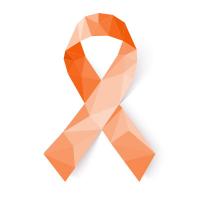Cancer is a condition where your body cells start growing out of control. Bladder cancer is where cancer begins in your bladder. Bladder cancer happens more frequently in men than it does in women, and although it can occur at any age, it most often affects older adults.
Bladder and Urinary Tract Overview
Your urinary tract includes your bladder, which is a hollow, expandable organ in your pelvis which stores your urine before it leaves your body when you urinate. This function is what makes your bladder an essential part of your urinary tract. Your urinary tract is made up of your ureters, urethra and kidneys.
Your renal pelvis looks like a funnel and is a part of your kidney that collects your urine and then sends it into your ureter. Your ureter runs into your bladder from each kidney, and your urethra carries your urine out of your body. The urinary tract also involves the prostate in men.
Like other urinary tract parts, urothelium, or a layer of cells, lines your bladder. This cell layer is separated from the wall muscles of your bladder, known as your muscularis propria, by a fibrous, thin band known as your lamina propria.
Bladder cancer starts when your bladder lining's healthy cells, usually the urothelial cells, start changing and growing out of control where they then form a tumor. These urothelial cells also line your ureters and renal pelvis.
While cancer developing in your ureters and renal pelvis is considered a form of cancer of your kidney, treatment for it is the same as with bladder cancer. A tumor can be benign or cancerous. A benign tumor is where you have a tumor growing, but doesn't spread. A cancerous tumor is referred to as being malignant and means the tumor grows and spreads to other body parts. Having benign bladder tumors is rare.
Statistics of Bladder Cancer for Men
The fourth most common type of cancer among men is bladder cancer. Men are four times more likely to receive a bladder cancer diagnosis than women. Also, incidence rates of bladder cancer are double in white men than in black men.
According to estimates by the American Cancer Society for 2019 in the U.S., there will be approximately:
- 80,470 new bladder cancer cases (18,770 in women and 61,700 in men)
- 17,670 bladder cancer-related deaths (4,800 in women and 12,870 in men)
These figures are similar in Australasia where the World Health Organisation tracked 2,764 new cases of bladder cancer among men in 2018, and 974 in women.
Older people are most affected by bladder cancer. Around 90 percent of individuals with bladder cancer are over the age of 55 years old. The average age individuals receive a bladder cancer diagnosis is 73 years old.
Types of Bladder Cancer in Men
The way the tumor's cells appear under a microscope determines the type of bladder cancer. The three primary types of bladder cancer for men include:
- Urothelial carcinoma: Sometimes also referred to as transitional cell carcinoma, this type accounts for around 90 percent of all bladder cancers. In adults, it also accounts for 10 to 15 percent of kidney cancers. This cancer starts in your urothelial cells in your urinary tract.
- Squamous cell carcinoma: Inflammation and irritation of the bladder lining cause squamous cells to develop. These cells, over time, could become cancerous. Around four percent of all bladder cancers are squamous cell carcinomas.
- Adenocarcinoma: Adenocarcinoma accounts for around two percent of all bladder cancers. It develops from your glandular cells.
Other bladder cancers exist, but are less common, including small cell anaplastic and sarcoma cancer. Small cell anaplastic cancer is rare but is capable of spreading to other body parts. Sarcoma starts in your bladder's muscle or fat layers.
Risk Factors for Bladder Cancer in Men
Just because you have a risk factor, or more than one, doesn't necessarily mean you're going to develop bladder cancer. Many individuals with risk factors don't develop bladder cancer. Still, you should know what the risk factors are for bladder cancer since there are things you can do that could lower your chances of developing it. If you are at risk of bladder cancer due to certain risk factors, being tested could help doctors find it early which will make treatment much more effective.
Some bladder cancer risk factors include:
1. Age or Ethnicity
Certain ethnic backgrounds in men contribute to a higher likelihood of being diagnosed with bladder cancer. Caucasian/White American men have two times the possibility of Hispanic American men or African American men of receiving a bladder cancer diagnosis.
Caucasian American men are about 2.5 times more likely than Pacific Islander/Asian American men to receive a bladder cancer diagnosis. In the U.S., for every 100,000 individuals, about 38.1 Caucasian/White American men, 19.3 Hispanic American men, 21 African American men and 15.2 Pacific Islander/Asian American men receive a bladder cancer diagnosis each year.
In the U.S., bladder cancer is more common in older men. Men have a higher chance of receiving a diagnosis of bladder cancer if they're more than 55 years old. American men between 75 and 84 years old receive a diagnosis of bladder cancer most often.
It's still not known why men develop bladder cancer more than women in the U.S. or why Caucasian/White American men have a higher likelihood of developing bladder cancer than men with another ethnic background. But, scientists continue to research to understand these trends more.
2. Genetics and Family History
Individuals with family members who have bladder cancer are at a higher risk of developing bladder cancer themselves. In some cases, this could be due to family members exposed to similar cancer-causing chemicals and toxins like those found in tobacco smoke. Individuals might also share gene changes, making it more difficult for their bodies to break certain toxins down, which could increase their chances of developing bladder cancer.
3. Smoking
Cigarette smoking is one of the leading causes of bladder cancer in men and accounts for around half the bladder cancer-related deaths. When smokers inhale, their bodies absorb the toxins into their bloodstream, and then the kidneys excrete these toxins in the urine. Since your urine sits in your bladder for hours before you expel it, your bladder lining is susceptible to prolonged contact with carcinogens, or cancer-causing substances.
Cigarette smokers are two times as likely than nonsmokers to develop bladder cancer. Those who smoke heavily have a higher risk than light smokers, and your risk will gradually diminish if you quit smoking, even if you have smoked for many years.
3. Toxins
Numerous industrial and workplace toxins can also injure your bladder lining cells, gradually producing cancer. Workers can be at a higher risk of developing the disease if they work in the electric, rubber, paint, textiles and other industries. Individuals who work around organic or aromatic amines chemicals are also at an increased risk.
4. Certain Herbal Supplements and Medications
According to the Food and Drug Administration, some diabetes medication is associated with a higher risk of bladder cancer.
Dietary supplements containing aristolochic acid, primarily herbs in the Aristolochia class, are linked with a higher risk of urothelial cancers like bladder cancer.
5. Arsenic in Drinking Water
Researchers have connected drinking water containing arsenic with a greater bladder cancer risk in some regions of the world. Your risk of arsenic exposure depends on your location and whether your drinking water comes from a public water system or well. The public water system has certain low arsenic content standards that must be met, while well water doesn't. Drinking water isn't a considerable arsenic source for most Americans.
6. Failing to Drink Adequate Liquids
Individuals who drink plenty of fluids, particularly water, every day seem to have lower bladder cancer rates. This could be because they're emptying their bladders more often and keeping carcinogens from sitting in their bladders.
7. Chronic Bladder Infections and Irritation
Certain infections and irritants are correlated with bladder cancer, particularly squamous cell carcinoma, including:
- Kidney infections
- Urinary infections
- Bladder catheters left a long time in place
- Bladder and kidney stones
It's not clear, however, if they actually do lead to bladder cancer.
Schistosomiasis, also referred to as bilharziasis, is a parasitic worm infection that could get into your bladder and is a bladder cancer risk factor. In the Middle East, Africa and other countries where you commonly see this parasite, squamous cell bladder cancers are more common. This type of bladder cancer is infrequent in the U.S.
8. Bladder Birth Defects
Before birth, the urachus connects the bladder and belly button. If some of this connection stays following birth, it can turn into cancer. Cancers that begin in your urachus are typically adenocarcinomas. These contain cancerous gland cells. Around a third of bladder adenocarcinomas start here. However, this is still rare and only accounts for less than half of one percent of all bladder cancers.
Exstrophy is another rare birth defect that can increase an individual's risk of bladder cancer. With exstrophy, both the abdominal wall in front of your bladder and your bladder itself don't completely close during fetal development and become fused together, leaving your bladder's inner lining exposed outside your body. While surgery soon after birth helps to close the abdominal wall and bladder and repair other related defects, individuals with this still have a higher risk for bladder cancer and urinary infections.
9. Personal History of Urothelial or Bladder Cancer
Urothelial carcinomas, in some cases, can form in various areas of your bladder as well as in your ureters, your kidney lining and urethra. When you have cancer in any part of your urinary tract lining, it puts you at greater risk of developing another cancer, either in the same area as before or in another area of your urinary tract. This is even true when your surgeon completely removes your initial tumor. Because of this, individuals with bladder cancer require careful follow-up to check for new cancers.
Symptoms of Bladder Cancer for Men
You can have one or more symptoms when you have bladder cancer. They can include:
1. Blood in Urine
Sometimes, blood in the urine, called hematuria, is the first bladder cancer sign. There might be enough blood to change your urine color to pink, orange or, less often, dark red. In some cases, the urine color is normal. However, a urine test can find small amounts of blood during a general medical check-up.
Blood might appear one day and not the next. Your urine may remain clear for several weeks or months. But, the blood typically reappears when you have bladder cancer.
If you have blood in your urine, Cxbladder offers non-invasive, easy-to-use, urine tests which are clinically validated to determine if you have bladder cancer.
2. Changes in Bladder Habits
Sometimes, bladder cancer can cause urination changes like:
- Burning or pain during urination
- Needing to urinate more frequently than normal
- Needing to urinate frequently in the night
- Feeling like you have to go right away, even when you don't have a full bladder
- Having a weak urine stream or trouble urinating
Bladder stones, a urinary tract infection, an enlarged prostate or an overactive bladder typically cause these symptoms. Still, it's essential you have a doctor check them so they can find the cause and treat it if needed.
3. Spread of Cancer
When you have bladder cancer that's spread to other areas of your body or has grown large, it can sometimes lead to other symptoms like:
- Lower back pain on one side
- Being unable to urinate
- Weight loss or loss of appetite
- Bone pain
- Feeling weak or tired
- Feet swelling
Again, something other than bladder cancer is likely causing many of these symptoms, but it's imperative you have your doctor check them.
Diagnosis of Bladder Cancer in Men
Once your doctor confirms you have bladder cancer, they might suggest additional tests to determine if your cancer has spread to other body areas like your lymph nodes.
Tests might include:
- Magnetic resonance imaging (MRI)
- CT scan
- Chest X-ray
- Bone scan
The doctor uses these procedures to learn information on the stage of your cancer. Roman numerals ranging from 0 to IV comprise the bladder cancer stages. The lowest stages mean your cancer is confined to your bladder's inner layers and hasn't grown to affect your bladder's muscular wall. The highest stage means your cancer has spread to organs or lymph nodes in distant body areas.
The staging system of cancer continues evolving and becoming more complex as doctors improve diagnosis and treatment. The doctor will use your stage of cancer to decide on the appropriate treatment for you.
Bladder Cancer Treatment for Men
Bladder cancer treatment options depend on various factors which include the grade of cancer, type of cancer and stage of cancer. These are all taken into consideration along with your treatment preferences and overall health.
Treatment for bladder cancer might include:
- Chemotherapy in the bladder to treat tumors confined to your bladder lining but have a high risk of progressing to a higher stage or recurrence.
- Surgery to eliminate the cancerous tissue.
- Whole body chemotherapy, also called systemic chemotherapy, to increase your chance of being cured when having surgery to remove your bladder isn't an option.
- Reconstruction for creating a new way to eliminate urine from your body after you've had your bladder removed.
- Radiation therapy for destroying cancer cells, often as the main treatment when surgery isn't desired or isn't an option.
- Immunotherapy for triggering the immune system of your body to fight cancer cells either throughout your body or in your bladder.
Your doctor may recommend a treatment combination approach.
Contact Cxbladder to Learn More About Our Suite of Non-Invasive Urine Tests
If you need a urine test to check for cancer or determine the stage of bladder cancer, talk to your doctor about using non-invasive urine tests from Cxbladder.
Learn more about Cxbladder Ask our team a question
Sources:
- https://www.cxbladder.com/us/clinician-information/
- https://www.cxbladder.com/us/blood-in-your-urine/how-the-urinary-tract-works/
- https://www.cancer.net/cancer-types/bladder-cancer/statistics
- https://www.cancer.org/cancer/bladder-cancer/about/key-statistics.html
- http://gco.iarc.fr/today/data/factsheets/cancers/30-Bladder-fact-sheet.pdf
- https://www.cdc.gov/cancer/bladder/index.htm
- https://seer.cancer.gov/statfacts/html/urinb.html
- https://www.cancer.net/cancer-types/bladder-cancer/introduction
- https://journals.lww.com/ajnonline/Abstract/2016/08000/Arsenic_Levels_in_Drinking_Water_Linked_to_Bladder.11.aspx
- https://www.cancer.org/cancer/bladder-cancer/about/what-is-bladder-cancer.html
- https://www.mayoclinic.org/diseases-conditions/bladder-cancer/symptoms-causes/syc-20356104
- https://www.ncbi.nlm.nih.gov/books/NBK232061/
- https://www.fda.gov/Drugs/DrugSafety/ucm109136.htm
- https://www.cancer.gov/types/bladder/patient/about-bladder-cancer-pdq
- https://www.cancer.org/cancer/bladder-cancer/causes-risks-prevention/risk-factors.html
- https://www.verywellhealth.com/bladder-tumors-2328869
- https://www.health.harvard.edu/mens-health/bladder-cancer-men-at-risk
- https://bladdercancer.net/men-risk-symptoms/
- https://www.cancer.org/cancer/bladder-cancer/detection-diagnosis-staging/signs-and-symptoms.html
- https://www.cancer.net/cancer-types/bladder-cancer/symptoms-and-signs
- https://www.mayoclinic.org/diseases-conditions/bladder-cancer/diagnosis-treatment/drc-20356109
- https://www.cancer.org/cancer/bladder-cancer/treating.html
- https://www.cancer.org/cancer/bladder-cancer/treating/by-stage.html
- https://www.cancer.net/cancer-types/bladder-cancer/treatment-options
- https://www.cxbladder.com/us/blood-in-your-urine/
- https://www.cxbladder.com/us/blood-in-your-urine/how-the-urinary-tract-works/






